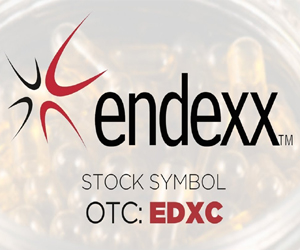Cannabis Trademark Bullying: Be Prepared for Worst Case Scenario
Uncategorized June 2, 2019 MJ Shareholders


I have advised countless cannabis companies, both start-up and well-established, on how to choose a strong brand and ideally, how to avoid trademark litigation down the line. But inevitably, clients come to me (even those who put a lot of thought into choosing their trademarks) with cease and desist letters and notices of opposition that have been filed against them with the United States Patent and Trademark Office (USPTO). The credibility of those litigious threats will fall somewhere on a sliding scale of “completely unfounded” to “very credible.” But something many business owners often don’t think about is the fact that even if the threats against them fall closer to the “completely unfounded” end of the scale, they will still need to pony up the cash (at least initially) to defend themselves, which can be costly.
I really got to thinking about this problem the other day when, following receipt by a couple of my clients of letters that I would deem verging on the “completely unfounded” end of the credibility scale, I saw a news article about one of my favorite coffee shops. Cat & Cloud, a small coffee roastery based in Santa Cruz, CA, is facing a petition to cancel one of their two trademark registrations with the United States Patent and Trademark Office’s (USPTO) Trademark Trial and Appeals Board (TTAB) by Caterpillar, Inc, maker of heavy machinery and workwear.
Cat & Cloud’s registration (for CAT & CLOUD) in Class 25 covers “[c]lothing, namely, shirts, hats, tank tops, sweatshirts, socks, underwear, shorts and shoes.” Caterpillar, Inc. owns numerous federal trademarks for things like heavy machinery, equipment rental, engineering services, and freight brokerage. They also own registrations in Class 25 for footwear and workwear apparel. Caterpillar, Inc. alleges that consumers are likely to be confused by Cat & Cloud’s use of its mark on footwear and apparel, presumably associating the goods with the Caterpillar brand. A quick look at the Cat & Cloud branding should make it pretty clear that this petition to cancel falls squarely on the “completely unfounded” end of the credibility scale.
But defending your trademark in petition to cancel or an opposition proceeding before the TTAB is an expensive endeavor. These proceedings follow a similar track to any other kind of litigation, and parties can quickly rack up tens of thousands of dollars in legal fees. If your mark is opposed and you choose not to respond, the opposer will win by default and your mark will be cancelled. So, regardless of the credibility of the threat, parties on the defensive in any kind of TTAB proceeding must pay to fight back if they want to retain their trademark rights.
We’ve already seen this play out in the cannabis space as well. A couple of years ago, our client Lux Pot Shop, formerly known as Stash Pot Shop, was confronted with allegations of trademark infringement by Stash Tea Company. Whether or not the large tea company could have prevailed in litigation was ultimately irrelevant, because paying tens of thousands of dollars to litigate the matter in federal court was not on the table for a relatively young start-up company. Stash Pot Shop still paid a substantial amount of money to gracefully re-brand to Lux Pot Shop and lost its initial branding investment in the “Stash” name.
So, ultimately, this is a cautionary tale. We’ve written before about how to choose a brand name that won’t get you sued and we’ve gone over the factors a court will utilize to determine whether one brand is likely to be confused with another:
- Strength of the mark;
- Proximity of the goods;
- Similarity of the marks;
- Evidence of actual confusion;
- Marketing channels used;
- Type of goods and the degree of care likely to be exercised by the purchaser;
- Defendant’s intent in selecting the mark; and
- Likelihood of expansion of the product lines.
But it’s also important to think beyond these factors and use common sense. If you’re using an existing trademark or copyright as inspiration for your brand, the likelihood of running into trouble is higher. If you’re choosing a mark that is similar to one owned by a company like Disney Enterprises, for example, which is extremely aggressive in defending its IP, even if the goods or services are very distinct, the likelihood of running into trouble is high. Don’t rely on third-party designers to provide you with a mark that won’t raise issues of infringement with another trademark owner. It’s always a good idea to have a conversation with your trademark attorney as early in the brand development process as possible, since they can help guide you in the direction of a strong and distinctive mark. But it’s also important to budget for worst case scenario, because there’s no way of removing all risk that you won’t end up in the same unfortunate situation as Cat & Cloud or Stash.
MJ Shareholders
MJShareholders.com is the largest dedicated financial network and leading corporate communications firm serving the legal cannabis industry. Our network aims to connect public marijuana companies with these focused cannabis audiences across the US and Canada that are critical for growth: Short and long term cannabis investors Active funding sources Mainstream media Business leaders Cannabis consumers










